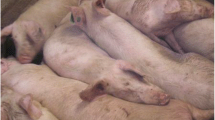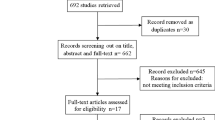Abstract
An investigation was made into the epidemiology of nematode infections of sheep in two districts of Jimma zone, southwestern Ethiopia. We used two approaches—long-term monitoring of identified sheep for nematode infection and abattoir or market survey for analysis. In the first monitoring regime, we used 80 lambs [40 sheep (20 per sex) from each district (Dedo and Yebu)] averaging 4–5 months of age. Faecal egg counts (FEC), packed cell volume (PCV) and body weight changes were monitored over a period of 1 year. Additionally, faecal samples were collected (on a weekly basis) from sheep brought to abattoir/market for 1 year to monitor faecal egg counts. The nematode parasite burden, as judged by FEC and PCV, was generally low indicating that the climatic conditions are not conducive to the development and survival of nematode eggs and the free-living stages; hence, little transmission occurred. In the experimental flocks, the highest FEC and lower PCV were recorded during the long rainy season (June to September) with peak in August and September. Faecal samples collected from abattoir/market also followed the same trend. Results from experimental sheep indicated that location had a significant (P < 0.01) effect on FEC, PCV and average daily body weight gain. The FEC and PCV for sheep in Yebu (mid-altitude) district were 126 ± 3.33 and 30.6 ± 0.26, whereas the values for Dedo (highland) were 93 ± 4.35 and 32.0 ± 0.21, respectively. The results indicate that the highland areas are comparatively less favourable to the survival and development of nematodes. Female lambs had lower FEC and higher PCV compared to male lambs (P < 0.05). The overall nematode parasite challenge in the area, however, is low. We, therefore, recommend rotational grazing management combined with monitoring parasite load and selective treatment to reduce productivity loses and pasture contamination.




Similar content being viewed by others
References
Barger I. A. 1993. Influence of sex and reproductive status on susceptibility of ruminants to nematode parasitism. International Journal of Parasitology, 23:463–470.
Biffa D., Jobre Y. and Chakka H. 2006. Ovine helminthosis, a major health constraint to productivity of sheep in Ethiopia. Animal Health Research Reviews, 7(1/2): 107–118.
Haile A. and Tolemariam T. 2008. The feed values of indigenous multipurpose trees for sheep in Ethiopia: The case of Vernonia amygdalina, Buddleja polystachya and Maesa lanceolata. Livestock Research for Rural Development. Volume 20, Article #45. Retrieved July 2, 2008, from http://www.cipav.org.co/lrrd/lrrd20/3/hail20045.htm
Haile A., Tembely S., Anindo D., Mukasa-Mugerwa E., Rege J.E.O., Alemu Y. and Baker R.L. 2002. Effects of breed and dietary protein supplementation on the responses to gastrointestinal nematode infections in Ethiopian sheep. Small Ruminant Research, 44 (3): 247–261.
Mamo B., Gebre-ab F. and Tedla S. 1981. Observations on Dictyocaulus filaria (Rudolphi, 1809) in Welo and Arsi administrative regions of Ethiopia. Ethiopian Journal Agricultural Sciences, 3: 75–80.
Mamo B., Tedla S. and Gebre-ab F. 1982. Survey of gastrointestinal helminths in sheep slaughtered at the Addis Ababa abattoir, Ethiopia. Ethiopian Journal Agricultural Sciences, 4: 87–94.
Mandonnet N., Ducrocq V., Arquet R. and Aumont G. 2003 Mortality of Creole kids during infection with gastrointestinal strongyles: A survival analysis. Journal of Animal Sciences, 81: 2401–2408.
Murray M., Trail J.C.M., Turner D.A., and Wissocq Y. 1983. Livestock productivity and trypanotolerance Network Training manual, International Livestock Centre for Africa. Addis Ababa. pp. 4–10.
Ndamukong K.J.N., and Ngone M.M. 1996. Development and survival of Haemonchus contortus and Trichostrongylus spp. on pasture in Cameroon. Tropical Animal Health and Production, 28: 193–197.
Njau B.C., Scholtens R.G. and Kasali O. 1990. Parasites of sheep at the International Livestock Center for Africa Debre Berhan Station, Ethiopia. Preventive Veterinary Medicine, 90: 267–277.
Norwak R. 1990. Development of mother discrimination by single and multiple newborn lambs. Development in Psychobiology, 22: 833–845.
Regassa F., Sori T., Dhuguma R. and Kiros Y. 2006. Epidemiology of Gastrointestinal Parasites of Ruminants in Western Oromia, Ethiopia. International Journal of Applied Research in Veterinary Medicine, 4(1): 51–57.
Rice J. 1995. Mathematical Statistics and Data Analysis, 2nd edition. Duxbury, USA.
SAS 2002. Statistical Analysis Systems for mixed models. SAS Institute, Cary.
Sissay M.M., Uggla A. and Waller P.J. 2007. Epidemiology and seasonal dynamics of gastrointestinal nematode infections of sheep in a semi-arid region of eastern Ethiopia. Veterinary Parasitology, 143: 311–321.
Tembely S., Lahlou-kassi A., Rege J.E.O., Sovani S., Diedhiou M.L. and Baker R.L. 1997. The epidemiology of nematode infections in sheep in a cool tropical environment. Veterinary Parasitology, 70 (1–3):129–41.
Tibbo M., Aragaw K. and Deressa A. 2004. Effects of anthelmintics and supplementation on productivity of Menz and Menz-Awassi crossbred sheep with sub-clinical helminthosis. Ethiopian Veterinary Journal, 8(2), 1–22.
Whitlock J.H. 1948. Some modifications of the McMaster helminth egg-counting technique and apparatus. J. Counc. Sci. Ind. Res. Aust., 21:177–180.
Acknowledgements
The authors wish to acknowledge the Ethiopian Institute of Agricultural Research for funding this study. Jimma University, College of Agriculture and Veterinary Medicine also provided various equipments and facilities for the study. The contribution of Anteneh Belachew, Zerihun Tadesse and Biruk Asrat is highly acknowledged.
Author information
Authors and Affiliations
Corresponding author
Rights and permissions
About this article
Cite this article
Haile, A., Gashaw, A., Tolemariam, T. et al. Epidemiology of nematode parasites of sheep around Jimma, southwestern Ethiopia. Trop Anim Health Prod 42, 825–831 (2010). https://doi.org/10.1007/s11250-009-9492-7
Accepted:
Published:
Issue Date:
DOI: https://doi.org/10.1007/s11250-009-9492-7




